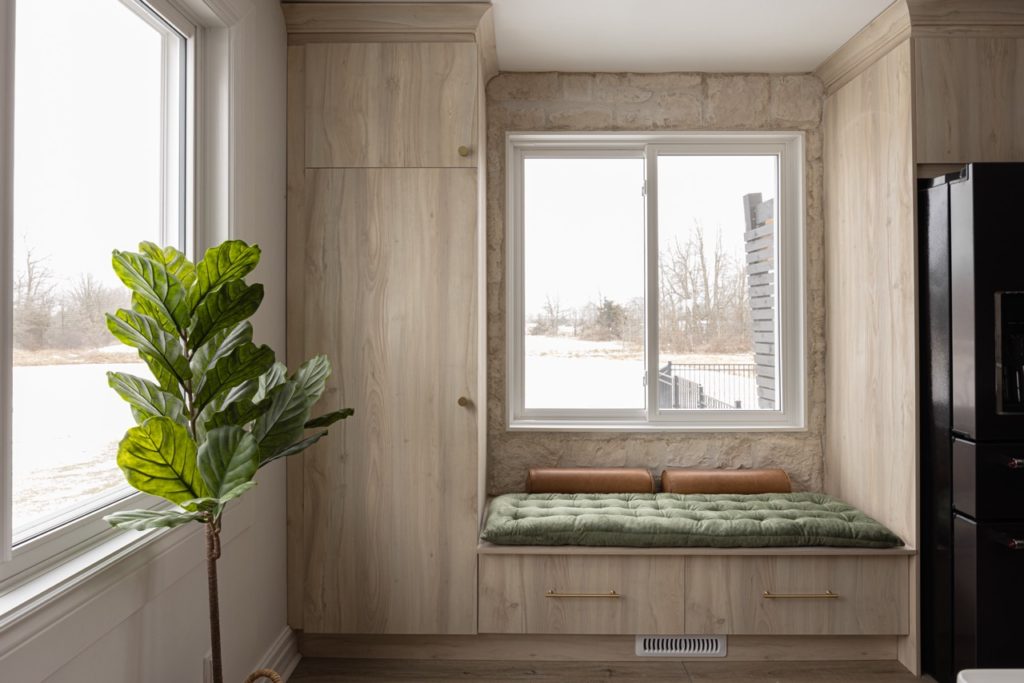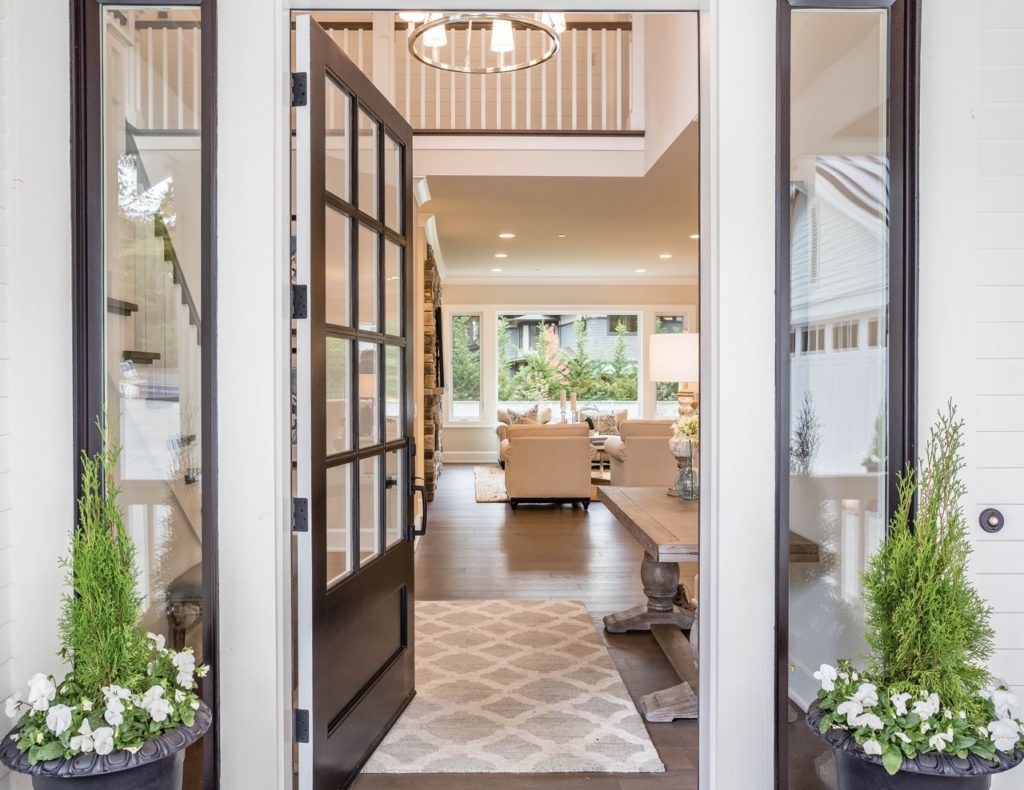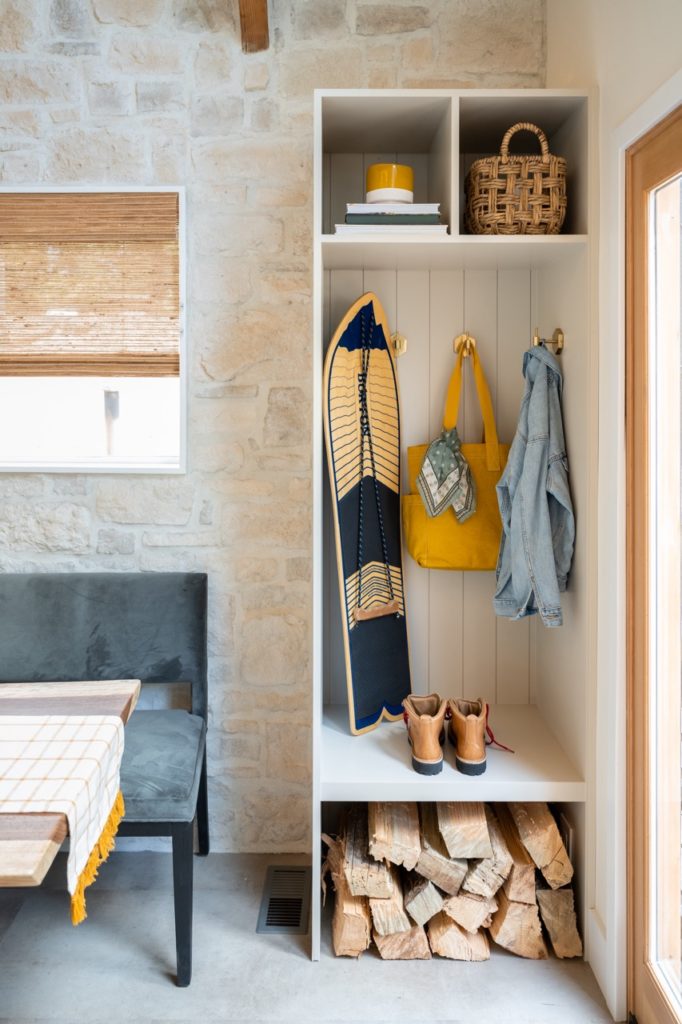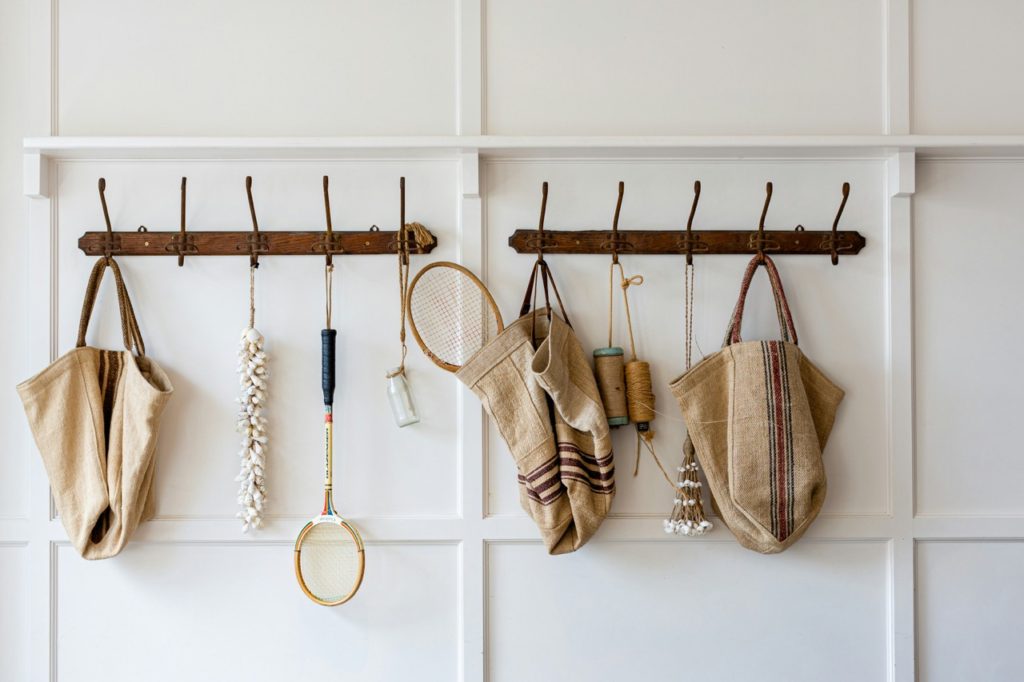Words: Sarah Lograsso, Director of Marketing and Product Management at Westlake Royal
Photos: Westlake Royal
When you step through the back door of a home, what’s the first thing that greets you? The mudroom—a space that’s often overlooked, yet it has the power to set the tone for one’s entire living environment. It’s the gateway where muddy shoes, wet umbrellas, and miscellaneous outdoor gear find their temporary abode.
The mudroom epitomizes the concept of threshold spaces, where the boundaries between inside and outside blur, facilitating a smooth transition from one realm to another– but it can be so much more than just a utilitarian space.
With a touch of functionality and a nod to one’s personal style, the mudroom can make an unforgettable first impression.

The Art of Elevated Functionality
The challenge of designing a mudroom lies in striking the perfect balance between casual functionality and elevated style. Achieving this balance can seem challenging, but with some thoughtful design choices, it’s entirely attainable.
Start by assessing a family’s needs. Is this space merely a destination for shoes and jackets, or could they benefit from additional features like a sink for quick handwashing, a laundry area, or a dedicated “drop zone” for keys and mail? Hooks, shelves, and cabinets can keep items neatly organized and easily accessible. Add labeled baskets for smaller belongings, ensuring everything has its place.
To maximize practicality, consider a mudroom with built-in seating. Benches or cubbies can offer convenient storage while doubling as a seating area for putting on or taking off shoes. This pursuit of elevated functionality entails a judicious selection of materials and finishes, balancing durability, aesthetics, and ease of maintenance. In such a highly trafficked area, considerations such as moisture resistance, stain repellent, and structural integrity are of the utmost importance.
Imagine it: A charming mudroom with a custom-built bench, topped with plush cushions and coordinating throw pillows– the perfect blend of comfort and function.

Transition Outdoors–Indoors With Ease
The mudroom is, by definition, a transitional threshold space. It’s the spot where one moves from the natural elements of the outside world into the comfort of your home, making it the perfect canvas to embrace nature’s beauty.
Technology continues to influence more of our daily activities, even in a transitional space like the mudroom. Through smart locks or virtual assistant technologies that automatically turn on the lights when you enter the home, it’s not surprising that we feel an increased desire to stay connected with the world outside our walls, windows, and doors.
To achieve this seamless transition to the natural world, consider incorporating textures and elements reminiscent of the homes surrounding terrain. Imagine a ceiling with exposed wood beams, a wooden bench, or even wood wall paneling to emulate a rustic, charming cabin-in-the-woods feel. To capture the tranquility of a coastal landscape, think calming blue accent colors and bamboo wainscoting reminiscent of serene bamboo groves. Similarly, the rugged elegance of a brick veneer accent wall can create an inviting space reminiscent of a charming countryside cottage.
To further the connection to nature, introduce organic-inspired décor. Mudroom textiles made from natural fibers like jute, linen, or hemp used on rugs, cushions, or window treatments will introduce an organic, tactile dimension to the space. Design features that showcase natural elements provide a primal, multisensory approach to reinforcing our connection to nature and completing the seamless union of the outdoors with the mudroom’s interior.

Make it Personal
Perhaps the most exciting aspect of styling the mudroom is the opportunity to make it unique– the mudroom is a canvas, and you are the artist.
Consider color schemes, patterns, and decorative elements that reinforce cohesiveness with the rest of the home’s design. For a vintage-inspired mudroom, opt for distressed wood accents and classic black-and-white tiles. Or, if the home’s styling taste leans towards modern chic, choose sleek, minimalist furniture and monochromatic hues.
But personalization doesn’t stop with aesthetics. Think about the practical side of the mudroom. Would a designated space for pet supplies, a dedicated area for your children’s school bags, or a clever system for sorting recyclables be helpful? The mudroom can be tailored to any family’s unique needs and lifestyle. Personal style can be incorporated through elements such as woven leather storage bins with custom labels, tailor-made cabinets in vibrant colors, or ornately decorated vintage coat hooks.
Don’t be afraid to infuse personality into the space, not only in terms of aesthetics but also in the way it functions to meet logistical needs.

The mudroom, often underestimated in its potential, is more than just a place for muddy boots and clutter. It’s a space that can set the tone for an entire home, offering both functionality and style. By carefully curating its design, you can transform this transitional space into an exquisite entryway that reflects personal style and welcomes its occupant’s home in grand fashion.













